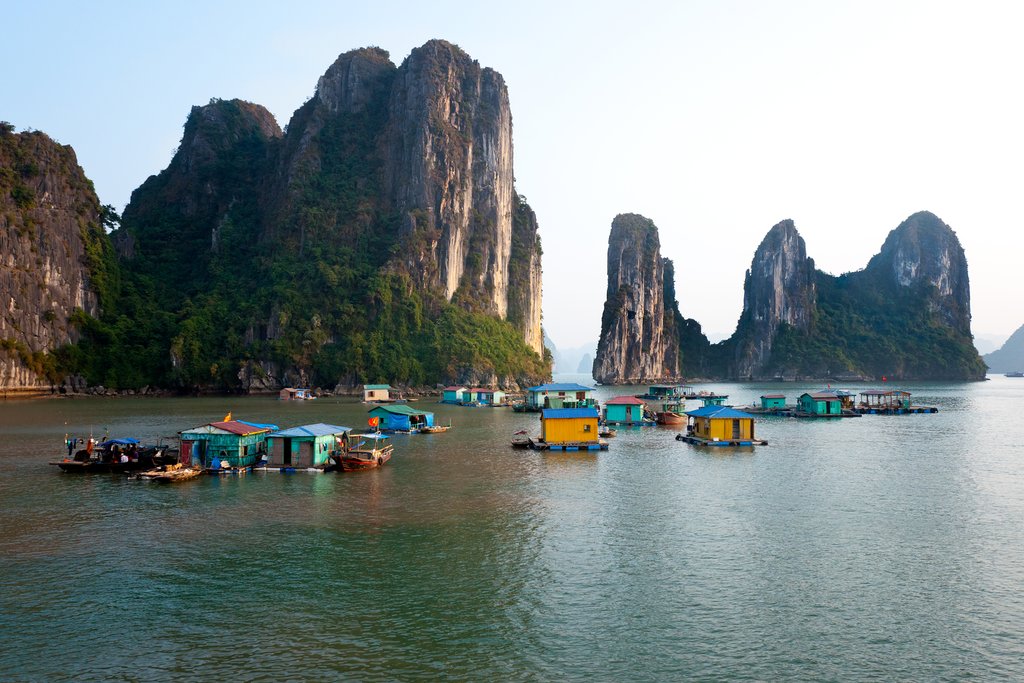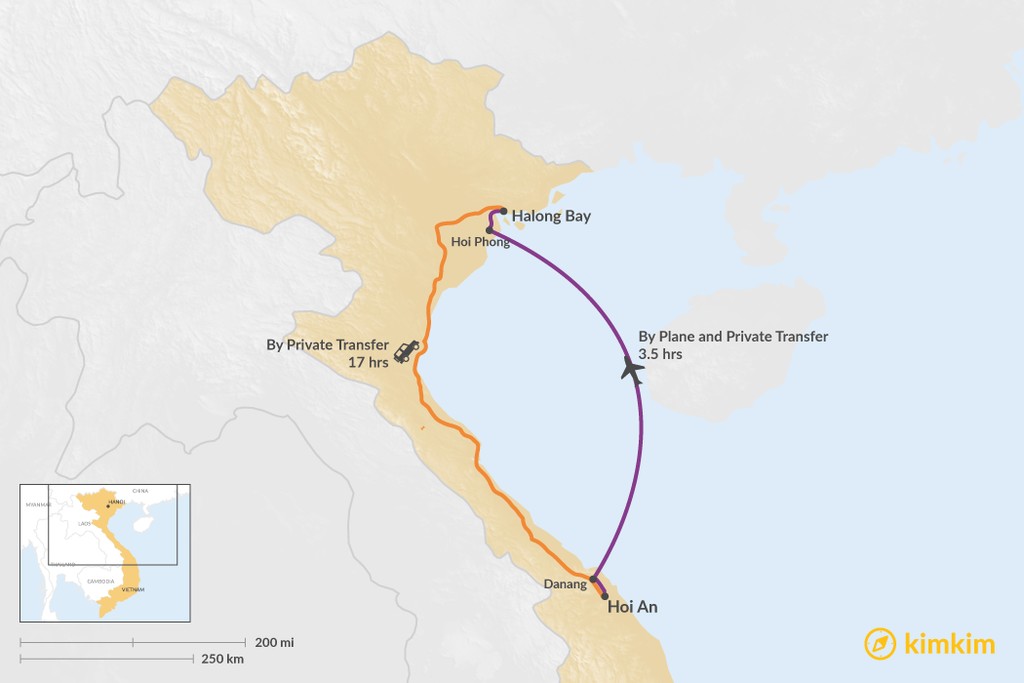
How to Get from Hoi An to Halong Bay

It's about 175 miles (109 km) from Hoi An to the famously scenic Halong Bay, and travelers have several transport options for the journey. The most efficient way is via a combination of plane and private transfer that gets you there in about 3.5 hours.
Those who have more time and might like to experience points of interest along the way may wish to arrange for a private transfer to complete the journey, especially if they would like to experience more of Vietnam's countryside, nature, and wildlife. Getting there by car takes 17 hours of driving, likely split between two days.
By Plane and Private Transfer
Duration: 3 hours, 30 minutes
Because there are no airports in either Hoi An or Halong Bay, a combination of plane and private transfer will be necessary.
First, travelers will arrange for a private transfer from Hoi An to the Danang airport. From Danang, a quick and direct flight to the Hoi Phong airport takes only one hour and fifteen minutes.
From Hoi Phong, a private transfer of approximately one hour, thirty minutes will make the final leg of the journey to Halong Bay. The drive winds over bridges and across islands, offering a taste of the beautiful scenery to come in Halong Bay.
By Private Transfer
Duration: 17 hours
Those who have enough time to budget and are able to split the journey over multiple days may wish to consider a private transfer between Hoi An and Halong Bay.
The drive winds along the coast, on the QL1A highway.
One of the first natural stopping points along the way is the city of Hue. Hue was the capital of Vietnam between 1802 and 1945, and much of its former imperial grandeur is evident in the city's palaces and historic landmarks. Beyond its moat and stone walls, the Citadel houses the temples and gardens of the old Imperial City, and the Hue Museum of Royal Antiquities gives visitors a taste of what life was like in Hue during the city's time as the imperial capital.
Further along the journey to Halong Bay, charming Ke Go Lake offers a prime opportunity to stop and enjoy Vietnam's aquatic and other wildlife. Ke Go Lake is surrounded by forests teeming with pheasants, black lemurs, and other wildlife, and travelers may wish to rent row boats for a peaceful afternoon on the lake among nature.
Continuing up the highway, travelers will find themselves in the city of Vinh. Vinh is the cultural and economic hub of central Vietnam, and its largest city. Approximately halfway through the journey, it offers an ideal place to stop for the night, and to experience the city's night markets for an authentic Vietnamese dinner. The nearby Du Dong village is full of sunflower fields.
Further along is the relatively under-the-radar region of Ninh Binh, which is surrounded by limestone cliffs and rice fields. One of the best ways to enjoy Ninh Binh's typical rural Vietnamese atmosphere is to rent a row boat and explore the region's temples, caves, and lakes.
